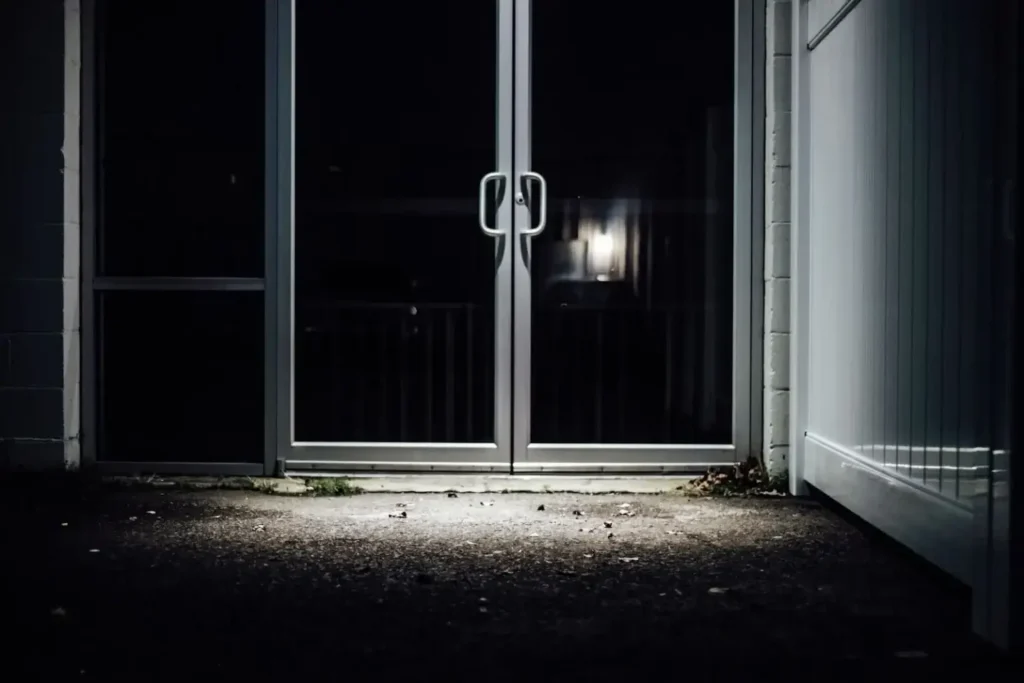Written By: Brad Campbell | December 22, 2024
From protecting schools to securing high-risk government buildings, bulletproof glass is a cornerstone of modern security systems. But with so many myths surrounding its true capabilities, it’s important to separate fact from fiction.
Can bulletproof glass really stop any bullet? Can bulletproof glass be broken? We’re here to clarify the facts and bust the most common myths around bullet-resistant glazing.
Bulletproof glass, more accurately known as bullet-resistant glazing, is a special type of glass or non-glass security glazing engineered to absorb the force of ballistic impacts. It’s often made up of multiple layers and materials, allowing different compositions to achieve different levels of ballistic resistance.
For example, glass-clad polycarbonate (GCP) ballistic glazing combines strong outer layers of laminated security glass with an inner layer of flexible, energy-absorbing polycarbonate.
However, there’s no such thing as glass that’s completely “bulletproof” — each type of bullet-resistant glass is rated to resist specific firearms and calibers of ammunition.
Depending on the specific ballistic resistance rating of the glazing, it might be used for high-risk retail applications, executive protection, or other high-security applications.

It’s a common belief that once you install bulletproof windows or doors, your property becomes impenetrable. This is far from the truth. Bullet-resistant glass is highly effective at protecting against ballistic attacks, but no material can withstand ballistic impacts forever.
For instance, a window made from UL 752 Level 1-rated polycarbonate-based glazing might stop several rounds from a 9mm handgun, but repeated shots or gunfire from a higher-caliber weapon, like a high-powered rifle, can penetrate the glazing.
Many people also believe that bulletproof glass guarantees unbreakable glass doors and windows.
While it’s true that ballistic-grade glazing is designed to prevent shattering upon impact, it’s not always unbreakable. Certain types of bullet-resistant glass can crack, spall, or even break during sustained attacks or under extreme pressure.
That said, specific types of bullet-resistant glazing can be penetrated without experiencing breakage.
For example, polycarbonate and glass-clad polycarbonate bulletproof windows are highly resistant and the polycarbonate layers can remain intact and strong even after multiple impacts.
Not all bulletproof glass is created equal, and it’s certainly not a one-size-fits-all solution. Different levels of ballistic protection are required depending on the most likely type of threat, the caliber of bullets you want to protect against, and the building’s security needs.
For example, as we mentioned earlier, a UL 752 Level 1-rated bulletproof glass panel might stop several rounds from a 9mm handgun, but it won’t hold up against more high-powered firearms, like an AK-47.
Facilities requiring higher levels of ballistic protection should consider thicker, stronger glazing, such as UL 752 Level 7-rated glass-clad polycarbonate.
Determining the right type of bullet-resistant glass depends on the application, which is why a professional threat assessment is critical to choosing the appropriate level of protection.

Whether or not bulletproof glass breaks or gets penetrated depends significantly on the caliber of firearm and type of ammunition used in an attack. Higher-caliber bullets pose a more significant threat to bullet-resistant glass.
While some types of bulletproof glass doors and windows may withstand smaller-caliber bullets from relatively low-powered firearms without a problem, larger and more powerful guns and ammunition may easily penetrate or otherwise cause damage to them.
Beyond the type of firearm and ammunition used, the duration of a ballistic attack also factors heavily into whether or not bulletproof glass breaks. The longer and more determined an attack is, the more likely penetration or breakage is.
While bulletproof glass is effective against certain ballistic threats, it may have limitations against other forms of attack.
For example, sustained attacks using different methods, extreme temperatures, or specialized tools could compromise the integrity of bulletproof glass.
Understanding these limitations is crucial for proper security planning, especially if forced entry prevention is your primary goal.

Despite the fact that bulletproof glass may eventually become compromised, many types of bulletproof glazing can continue to protect lives by providing access denial.
What this means is that even if a ballistic-grade window or door is penetrated or damaged during a ballistic attack, it won’t give way or allow an attacker to pass any part of their body through — it continues to deny them access and prevent forced entry.
This strength of bulletproof glass provides valuable time during an active threat scenario, allowing building occupants to evacuate or shelter in place while they wait for law enforcement to arrive and neutralize the threat.
The access denial offered by bullet-resistant security glazing can prevent tragic mass casualty events in facilities like schools, government buildings, and other high-risk commercial buildings.

In the quest for enhanced commercial security, ballistic-grade security glazing is a powerful companion, providing high levels of protection against active threats and forced entry.
However, it’s crucial for individuals and organizations to have a realistic understanding of the capabilities and limitations of bulletproof glass in order to implement it effectively as part of hardening any facility's doors and windows against threats.
While bullet-resistant windows and doors offer a high level of protection against many ballistic threats, it’s important to understand that there’s no such thing as fully bulletproof glass and that it can still be penetrated and otherwise damaged in certain scenarios.
At Riot Glass, we specialize in customizing ballistic-grade security solutions to your unique needs, ensuring that your commercial property is equipped with the best possible protection against ballistic and forced entry threats.
Contact our experts today for a free consultation and take the first step toward securing your property and protecting your people against the worst-case scenario.

HOW CAN WE HELP YOU?
